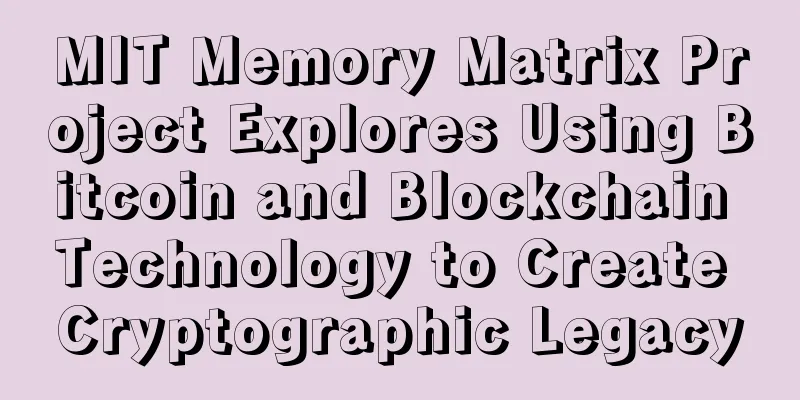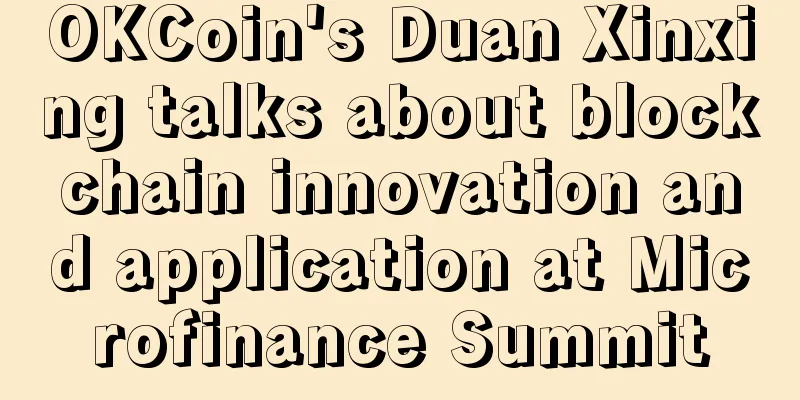MIT Memory Matrix Project Explores Using Bitcoin and Blockchain Technology to Create Cryptographic Legacy

|
In this day and age, cultural heritage is one of the most important cornerstones of our society. Of course, we are doing a lot of work to protect this heritage. MIT seems to be exploring the use of blockchain technology to protect cultural heritage, or more precisely, to encrypt heritage. Why is crypto heritage important to us?What we call cultural heritage is usually recorded in oral history or written form, but these forms are no longer very effective. Especially in times of (political) unrest, it is not easy to protect information in these areas. Whether it is due to conflicts or natural disasters, libraries and historical places are the first targets of destruction. Bitcoin combined with blockchain could be a very attractive approach to this problem, as they can be used to create a cryptographic legacy. Using a distributed, tamper-proof ledger that can be accessed by anyone at any time has significant advantages. Additionally, this technology can be used to authenticate documents and securely sign messages, making it far superior to any existing solution. Until now, the information contained in history books has sometimes raised far more questions than it has answered. For example, certain tribes and societies lived between year x and year y, but there is no way to verify this. Documenting this information about events, locations, and even infrastructure will help future generations better describe what our current society looks like. Through regular Bitcoin transactions, we can sign an external document on the blockchain. In addition, it is also possible to write text to the blockchain through miners or by programming specific addresses. However, both solutions are not very good in their current form. The Bitcoin OP_RETURN field protocol seems to have many advantages in this regard, but there are still many problems with how to handle this data in the future. Crypto-heritage projects are currently being tested, one of which is the Memory Matrix project. MIT is an important institution in this field, as their campus is being used to reconstruct destroyed heritage sites in a participatory project. Reconstructing lost culture through pixels is also an attractive aspect of the project. Additionally, Crypto Heritage allows users to prove their digital ownership of a pixel. Additionally, everyone can encrypt information using a public key that is attached to the pixel. Original article: http://www.newsbtc.com/2016/04/24/mit-explores-cryptographic-heritage-solutions-bitcoin-blockchain/ |
>>: ConsenSys develops Regis for distributed registry
Recommend
CoinDesk's latest survey report: Who is really using Bitcoin?
Since the birth of digital currency, young people...
What kind of women are prone to cheating? What are the signs of cheating women?
When it comes to the temptation of the opposite s...
Where does a man's mole grow to help him marry a virtuous wife?
Married people always like to say that "marr...
BIP47 Bitcoin Payment Code: Invisible Bitcoin Address, Making Bitcoin Transactions Untraceable
Samourai Wallet developers officially launched th...
Girls with short faces have good fortune
For a person, if he encounters some facial featur...
How to tell if a person has bad relationships with others
Whether a person is popular or not is not only re...
Belarusian president encourages workers to stay in the country for cryptocurrency mining
Belarusian President Alexander Lukashenko encoura...
Halong Mining, a new mining company, received a great deal of support from Samsung, and its 10nm ASIC chip has been exposed
Samsung is producing ASIC chips for mining hardwa...
Russia's central bank tests stablecoins, Sichuan regulates Bitcoin mining
Author: Guosheng Blockchain Research Institute su...
What kind of mole will affect your career?
A person's career luck actually depends to a ...
Which face is more likely to be valued by the leader?
It's graduation season again. Graduates who a...
Coinbase CEO: Ethereum's scalability is better than Bitcoin's
A few days ago, Coinbase CEO Brian Armstrong post...
A graphic analysis of a man's love line from shallow to deep
Where is the marriage line on your hand? Every co...
Physiognomy and annual fortune
Below the forehead, the area right next to the fo...
Taiwan is investigating the Bitmain incident and has transferred more than 20 semiconductor companies to investigation
The turmoil caused by Bitmain in Taiwan is still ...









